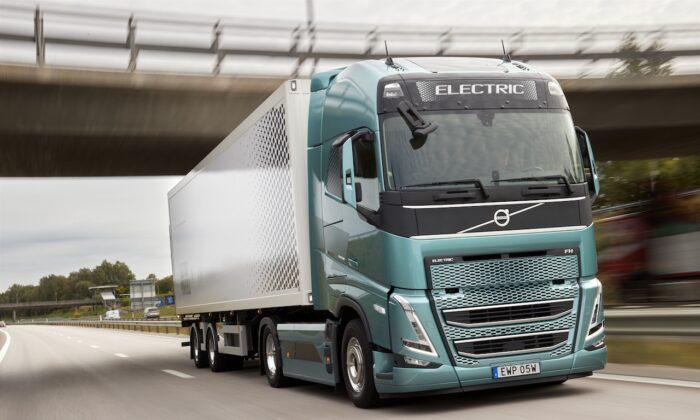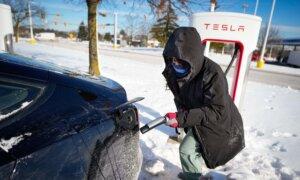Australian Prime Minister Anthony Albanese has launched a fleet of 43 electric trucks subsidised by the government.
As a result, parcel delivery company Team Global Express will replace a third of its trucks in Western Sydney with electric vehicles.
The federal Labor government will provide $20.1 million of taxpayer funds to support the project via the Australian Renewable Energy Agency (ARENA).
The CEO of Team Global Express is Christine Holgate, the former head of Australia Post.
The company have bought 60 high-tech EV trucks as part of the $44.3 million “Depot of the Future Project.” They include 36 Volvo FL Electric trucks, and 24 Daimler Fuso eCanters.
Prime Minister Anthony Albanese said the government prides itself on working with companies like Team Global Express and Volvo to “seize the opportunities that come with embracing electric heavy vehicles.”
“This also delivers on our election commitment through the Driving the Nation Fund into cutting transport emissions and rolling out charging infrastructure across Australia.”
Team Global Express CEO Ms. Holgate said the company is thrilled the trucks are on Sydney roads delivering parcels directly to residential and commercial customers.
“Team Global Express is proud to roll out an electric vehicle trial of this scale and support our industry and country’s renewable energy transition ambitions,” Ms. Holgate said.
“At the time of placing our order with Volvo, we held the record for the largest order of medium-duty electric vehicles the company had received globally.”
Climate Change and Energy Minister Chris Bowen added, “These trucks won’t just be the cleanest and quietest delivery trucks on Sydney’s streets–they’ll be the cheapest to run, including maintenance, a huge expense for any logistics business.”
“We have a driving the nation fund and it'll make an enormous difference to replace one-third of their vehicles that deliver things to supermarkets and deliver a range of goods right around Western Sydney with electric vehicles that are cleaner and cheaper to run,” he said.
In response to concerns about lithium-ion fires, Mr. Albanese said, “No, these are very safe.”
Coalition to Pursue Nuclear
Meanwhile, while the government continues its renewable energy push, Opposition Leader Peter Dutton has confirmed he will make the case for nuclear power in Australia at the next election.“We need to deal with the uncertainties around supply—so we need to make sure that we can keep the lights on.
“So, if the prime minister makes a decision that it’s safe enough to put the submariners onto a submarine with a nuclear reactor that powers the submarine, why is it not safe to have these located in areas where we’ve got a coal-fired generator coming to an end of life?”
Mr. Dutton had days earlier revealed the Liberal-National Coalition would be looking at up to six sites for nuclear reactors in Australia as part of its energy plan due in May.
“Nuclear is the only proven technology which emits zero emission and firms up renewables,” he said in a speech at the Australian Financial Review Business Summit in Sydney.
Mr. Dutton said “overbuilding renewables” drive up prices,“ noting that with ”baseload power in the energy mix like nuclear, prices are cheaper.
He said Australia’s energy mix is about 21 percent gas, 47 percent coal, and 32 percent renewables.
Mr. Dutton contrasted this with the Ontario province in Canada, which he said was 5 percent gas, 35 percent renewables, and 60 percent nuclear. While South Korea’s energy mix was about 30 percent gas, 30 percent coal, and 30 percent nuclear—with the balance from hydro.
Mr. Dutton said Canadian and South Korean residents paid less for electricity.
“Averaging the electricity costs for all Australian states and territories, at the moment we pay about 30 cents a kilowatt hour. But costs are as high as 33 cents a kilowatt hour for New South Wales. And 45 cents a kilowatt hour for South Australia,” Mr. Dutton said.
“Canadians in Ontario pay 16 cents Australian a kilowatt hour. South Koreans are paying 18 cents Australian a kilowatt hour. In other words, Australians pay almost double what Ontario and South Korea residents are paying for their electricity.”







